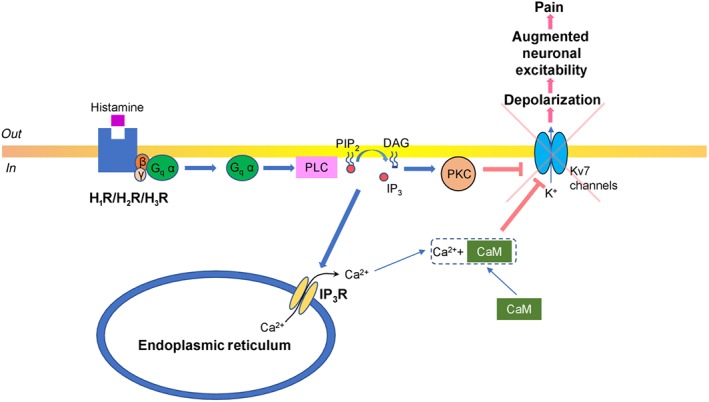Figure 1.

Diagram illustrating histamine receptor signalling—Gq pathway. Histamine binds to histamine receptors (H1, H2, or H3 receptor subtypes) that are coupled with the Gq‐type protein. Gq α subunit activates PLC which hydrolyses phosphatidylinositol 4,5‐bisphosphate (PIP2), subsequently producing DAG, that remains in the inner leaflet of the plasma membrane activating PKC, and water soluble inositol triphosphate (IP3), which binds to http://www.guidetopharmacology.org/GRAC/FamilyDisplayForward?familyId=123 (IP3R) and stimulates Ca2+ release from endoplasmic reticulum. This intracellular Ca2+ forms a complex with calmodulin (CaM) Ca2+CaM and induces PKC‐dependent phosphorylation. This suppresses the activity of potassium voltage‐gated channels type 7 (Kv7 channels), which depolarizes the neurons, and leads to the augmentation of neuronal excitability, which manifests as increased pain symptoms
